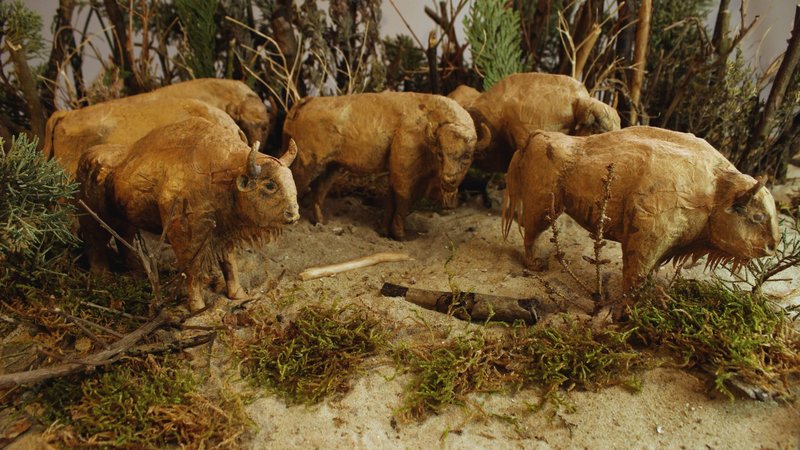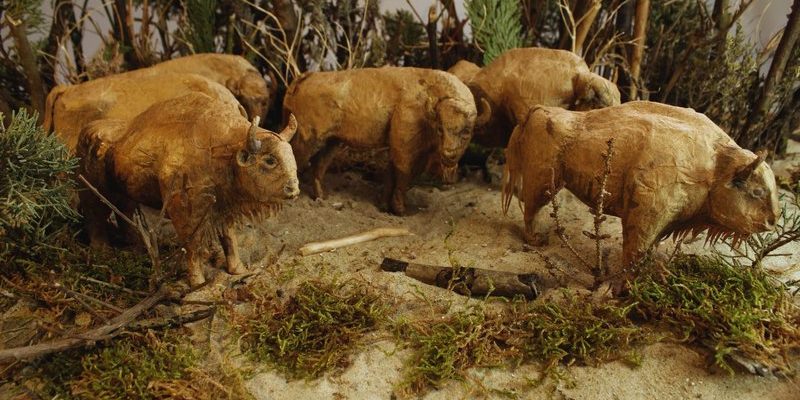
Imagine sitting in a cozy café, sipping your favorite drink while chatting about the wildlife around us. You might wonder how an animal that once roamed freely in vast forests could find itself on the brink of extinction. It’s a bit like watching a favorite show get canceled—sometimes, it feels like there’s nothing we can do. But the story of the European bison is one of hope and resilience, reminding us of the impact we can have on conservation.
So, let’s break down the current situation of the European bison, why it matters, and what efforts are being made globally to protect this incredible animal.
The History of the European Bison
The European bison has a rich history that stretches back thousands of years. These animals once thrived in the forests and grasslands of Europe, with populations numbering in the millions. Their presence played a crucial role in the ecosystem, contributing to biodiversity in these habitats.
However, as human populations grew, so did the pressures on these wild animals. Deforestation for agriculture, hunting, and habitat loss dramatically reduced their numbers. By the early 20th century, the European bison was nearly extinct, with the last wild populations disappearing by the 1920s. It was a dark time, similar to watching a beloved character fade from a story we cherish.
Conservationists stepped in to rescue this magnificent species. Thanks to extensive breeding programs and dedicated efforts, the bison is making a comeback. Today, we have a small but growing population, mainly in protected areas and reserves. But the question remains—are they out of the woods yet?
Current Conservation Status
As it stands, the European bison is classified as *Near Threatened* by the International Union for Conservation of Nature (IUCN). This classification is crucial because it indicates that while the numbers are improving, the species is still vulnerable to extinction.
To put this in perspective, there are approximately 7,000 European bison living today, primarily in Poland, Belarus, and certain reserves across Europe. Conservationists are developing new strategies to ensure their survival, but challenges persist. It’s like trying to grow a plant in a rocky garden; the roots may take hold, but the surrounding environment can still hinder growth.
Strong conservation programs focus on habitat protection, sustainable tourism, and community involvement. By working with local populations, conservationists aim to foster a sense of stewardship over the bison’s habitat. But here’s the thing—without ongoing efforts and support, the future of the European bison could still be uncertain.
Challenges Facing European Bison
You might be wondering what challenges the European bison faces today. The truth is, despite conservation efforts, a few key hurdles need to be addressed:
- Habitat Loss: As urban areas expand and agriculture intensifies, natural habitats shrink. This fragmentation makes it challenging for bison to find food and mates.
- Genetic Diversity: The small number of bison can lead to inbreeding, which reduces genetic diversity and the species’ overall health.
- Human-Wildlife Conflict: As bison populations grow, they sometimes venture into agricultural lands, leading to conflicts with farmers. This can lead to negative attitudes towards conservation efforts.
These challenges are like barriers in a race. To ensure the European bison thrives, conservationists must break through these hurdles and find solutions that benefit both the bison and human communities.
Global Conservation Efforts
Around the world, people are coming together to support the European bison’s recovery. Various organizations and governments are collaborating to create a more favorable environment for these animals.
In Poland, for example, the Białowieża Forest is a UNESCO World Heritage Site and home to one of the largest populations of European bison. Here, local authorities focus on protecting the bison’s habitat while allowing sustainable tourism. This sort of eco-friendly approach not only aids in conservation but also nurtures the local economy.
In addition to habitat protection, programs that promote genetic diversity are critical. Conservationists are increasingly using innovative techniques, like selective breeding and creating wildlife corridors to connect isolated populations. This approach ensures the bison can roam freely and interact with other groups, helping maintain a healthy gene pool.
Honestly, it’s incredible to see how much progress is being made. It’s like watching a team of athletes work together to win a championship—everyone has a role to play, and the efforts can lead to amazing results.
Community Involvement
A vital piece of the conservation puzzle is community involvement. When local people feel invested in protecting the European bison, everyone wins. Educational programs aimed at raising awareness about the species and its importance help foster a connection between people and wildlife.
For instance, storytelling and cultural activities centered around the bison can help revive interest and appreciation for this magnificent animal. Imagine kids hearing about the bison’s history from their grandparents, instilling pride and responsibility to protect their heritage.
Moreover, when communities see the benefits that wildlife tourism can bring—like jobs and economic support—there’s a greater chance they’ll advocate for conservation. It’s a partnership where both sides benefit, similar to how a healthy garden thrives with the right balance of sun and water.
The Future of the European Bison
Looking ahead, it’s clear that the future of the European bison hinges on ongoing conservation efforts and community involvement. While the species has made a comeback, it’s essential to maintain and strengthen protections against threats.
Continuing habitat restoration, promoting genetic diversity, and fostering cooperation between conservationists and local communities are all key. The idea is to create a sustainable future where bison can roam freely, just as they did in centuries past.
Remember, every effort counts, whether big or small. Supporting conservation organizations, spreading awareness, and advocating for policy changes can all make a difference. We have the power to influence the outcome of this incredible species.
So, is the European bison endangered? The answer is a bit complicated. While they are not at immediate risk of extinction, they are still classified as *Near Threatened*, meaning they need our help to thrive. The story of the European bison is one of hope, resilience, and collaboration—a reminder that by working together, we can protect and preserve the wildlife around us.
As we sip our coffee and contemplate the future, let’s remember that each of us can play a role in conservation. The European bison’s journey is far from over, but with continued effort, we might just witness this magnificent animal flourish once again.

